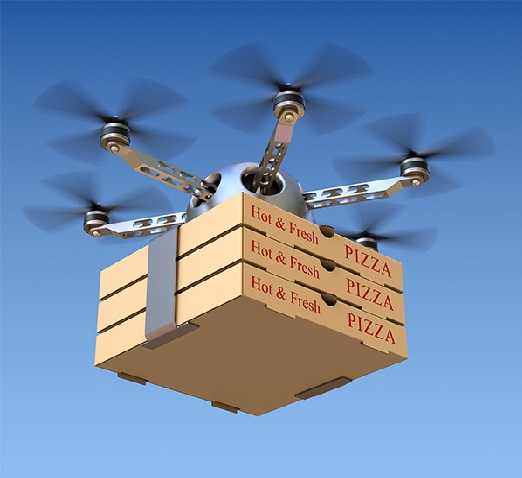Drone Technology Supports The Projects, Not Only Taking Photos and Visual But Also Delivery

Wow ! Drone is really able to Deliver Your Pizzas Request.
INTERNATIONAL | TECHNOLOGY -
Autonomous drone technology is, to an extent, already available.
To demonstrate, let’s assume the aerospace industry were to adopt the automotive industry’s five levels of autonomy. If so, then we can define:
1. Level 0: There is no autonomy.
2. Level 1: There are autonomous systems, like altitude control, but the pilot is in control.
3. Level 2: There are multiple autonomous systems running simultaneously, but the pilot is in control.
4. Level 3: The craft operates autonomously under certain conditions, but a pilot must monitor its progress.
5. Level 4: The craft is autonomous in most situations; the pilot can take over but generally doesn’t have to.
6. Level 5: The drone is fully autonomous.
When Will We Get Autonomous Drones?
It’s less a question of when we will get autonomous drones and more a question of how autonomous we want them to be. Some of them already have a semblance of autonomy.
Relatively speaking, it’s easy to design a UAV that can safely fly itself high over a city between two pre-defined points, or vertiports. But it’s much harder to design one that can deliver pizza to your front door in an urban environment.
The most challenging parts of any flight are the approach, landing and takeoff. In an urban area, the pizza bot will need to perform these actions while avoiding houses, pets, people, clothes lines, weather, birds and other objects in the sky. Until an autonomous craft can perform these actions reliably in an urban setting, prepare to tip the pizza delivery person.
Current drone technology has limitations. For instance, many functions are automated, but an expert is typically supervising the flight, ready to take control. Generally speaking, the technology isn’t ready to:
1. Manage complex, unpredictable situations
2. Handle adverse weather
3. Fly without restrictions in populated areas
We are already starting to see drones being used for remote asset inspections, deliveries to remote areas and emergency use in hazardous situations. In a few years, these and other applications will be commonplace.
Once these applications prove the viability and commercial success of the technology, fully autonomous drones capable of transporting humans will become a reality. In short, it will be some time before we are comfortable letting go of the ultimate safety feature — the remote pilot.
Editor :Andi Saputra
Source : Original Article International SigapNews Group Research and Development

